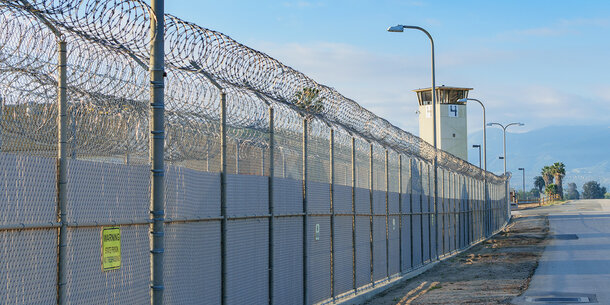Every day in courtrooms around the country, judges decide whether to release, detain, or set bail for people charged with crimes. Bail involves a commitment or set of conditions to ensure the person will appear for their next court date.
For many, those conditions include an amount of money that is often beyond their ability to pay. As a result, despite the presumption of innocence until proven guilty, hundreds of thousands of people are held for months or even years pending trial because they can’t afford bail. Evidence shows that this unfair system is ineffective at advancing public safety, as people who can afford bail can simply pay to be released, regardless of any risk they may pose.
But efforts at reform often run into challenges, as we highlight in a new report. One reason is lobbying by a for-profit industry, whose revenue of about $2 billion a year depends on people being unable to afford to pay bail upfront. The United States is only one of two countries (the other is the Philippines) where the profit motive dominates the legal system in this way. The pretrial release system in the United States exhibits glaring racial disparities, with Black and Latino populations facing greater rates of pretrial incarceration as well as higher bails set. Subsequently, commercial bail fees largely siphon money from communities of color.
Here’s how it works: If a court sets a money bail, people who can’t afford to pay the full amount can work with a commercial bail bond company to purchase their release. Consider a person for whom a judge sets bail at $10,000. The commercial bail company will post a promissory note to the court for $10,000, typically charging the individual 10 percent of that amount — in this case, $1,000. If the individual cannot afford the full $1,000, the bail bond company may offer a payment plan that can feature interest rates as high as 30 percent. The $1,000 paid to the bail bond company is nonrefundable. Once the payment arrangement is made, the commercial bail company then secures the detained person’s release from jail. The company is on the hook to pay the full bail amount if a person misses a court appearance or violates the conditions of their release.
A study by the Pretrial Justice Institute found that unsecured bonds — a promise to return to court that is not backed by money — achieved the same court appearance rates as cash bail. And there is no evidence indicating bail reform drives higher crime rates. Yet, the bail bond industry has engaged in lobbying efforts costing millions of dollars around the country to oppose bail reform. In our report, we detail two cases where lobbying from the bail bond industry and their insurance backers has stymied efforts at bail reform at the expense of fairness and public safety.
California is one state where the commercial bail industry was successful in halting large-scale reforms. The California Money Bail Reform Act would have replaced cash bail with risk assessments and would have made California the first state to eliminate cash bail. The bill was signed into law on August 28, 2018. However, Californians Against the Reckless Bail Scheme, a PAC organized by the industry group American Bail Coalition, filed a veto referendum the very next day, suspending the law’s enactment. With the industry reportedly spending millions of dollars on the campaign, the law was repealed in a referendum vote in 2020. It is worth noting that some progressive advocates also joined in this repeal effort, fearing that the law would expand preventive detention and rely too heavily on a risk assessment tool that could perpetuate racial biases.
The bail bonds industry’s lobbying efforts do not always succeed at blocking reforms in the long run. In Maryland, legislative efforts to reform the state’s bail system had been blocked by lobbying from the commercial bail industry. But in 2016, counsel to the Maryland General Assembly determined that there was a “significant risk” that the state’s bail system violated due process in allowing bail to be set at unaffordable levels. Shortly thereafter, the chief judge who oversees Maryland’s district court advised Maryland judges and commissioners to set the “least onerous” conditions of release on individuals. Following this directive, a lobbyist representing the bail bond agents said they would oppose any effort by the judiciary to implement these reforms. In 2017, the General Assembly’s Rules Committee adopted a rule that formalized this earlier guidance. It’s still in place, despite the bail industry’s lobbying efforts to repeal it.
In Challenges to Advancing Bail Reform, we suggest steps policymakers and practitioners can take to help ensure successful bail reform implementation in the future and to alleviate some of the negative impacts of a financial system of cash bail. Some of these include increasing awareness on the safety and efficacy of bail reform, as well as suggesting lawmakers employ a thoughtful data-based approach when assessing bail reform policies. Funding for implementation of bail reform is also important, as training is a vital component to ensuring jurisdictions and that courts are able to carry out reform policies, such as ensuring jurisdictions have adequate resources to implement supervision services. Any such changes should also center fairness and public safety rather than the bail industry’s bottom line.





